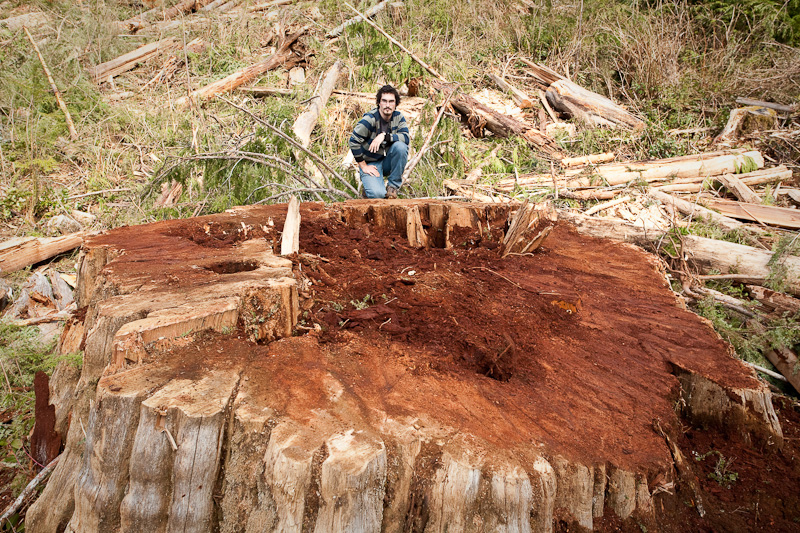
Old-growth forest activists turn to Facebook
Some Vancouver Island environmentalists who say they discovered tree stumps as wide as a living room are turning to Facebook for help raising awareness of what’s being lost through old-growth logging.
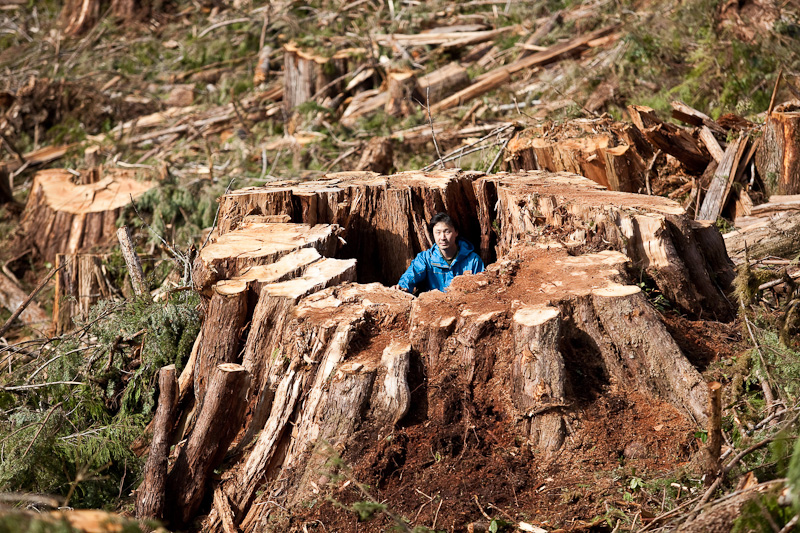
Old-growth forest ‘a sea of stumps’
Massive stumps found on Crown land near Port Renfrew are arousing fears that logging companies are taking the biggest and best old-growth trees -- at the same time as the local chamber of commerce is trying to promote giant-tree tourism.

Celebration of Nature, Music and Dance brings artists together to protect forests
"Celebration of Nature, Music and Dance" took place in a unique setting at Tzvi's Place, 1823 E 2nd Ave in Vancouver. Music and dance started last night, Saturday, May 8, 2010 at 7:30pm and ran through Sunday, May 9, 2010 at 2:00am. The event was described as "honoring our Ancient Forests with incredibly talented musicians, dancers and artists."
The event was partially a fundraiser for the Ancient Forest Alliance, which is a new British Columbian organization working to protect the endangered old-growth forests of BC and to ensure sustainable forestry jobs in the province. It was founded in January of 2010 by former Western Canada Wilderness Committee activists Ken Wu, TJ Watt, and others, and by Vancouver old-growth activist Michelle Connolly. I spoke with Michelle Connolly about the groups mission to be a grassroots environmental organisation working to foster knowledge and connection to these forests, as well as to advocate politically for their protection.
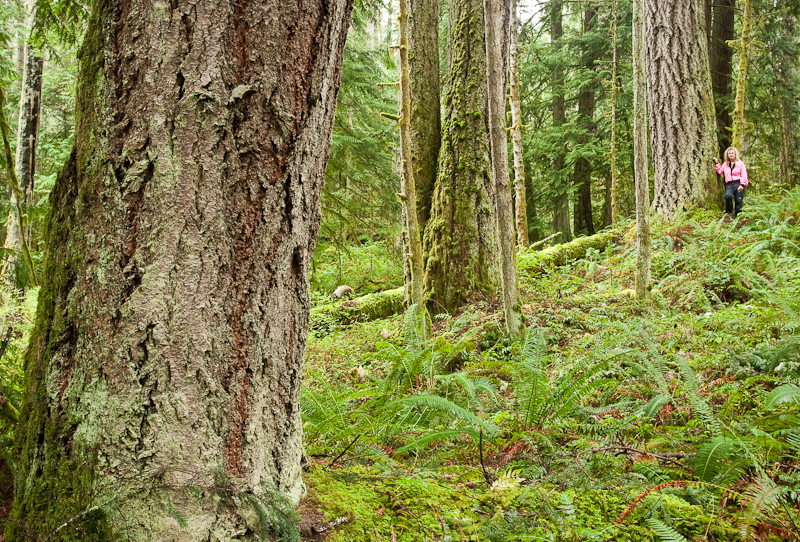
Prospect of logging in Douglas fir ecosystem above Nanoose Bay worries neighbouring municipalities
To the Nanoose First Nation, District Lot No. 33 is a prime piece of forest in the middle of its traditional territory, rich with towering old-growth Douglas firs over which the band holds legal timber harvesting rights.
To neighbours, environmentalists and municipal officials throughout the region, DL 33 is a pristine example of the endangered coastal Douglas fir ecosystem found only in B.C.’s Georgia Basin and Washington State’s San Juan Islands.

Forest industry pays for many services
NOTE: The following letter to the editor by Dave Lewis of the Truck Loggers Association, who support raw log exports and apparently the demise of union jobs in the forest service, fails to mention that the long-term decline in the coastal forest industry over the span of 20 years is due to the depletion of the old-growth resource (the biggest, best, and most accessible trees in the lower elevations), that ancient forests are worth more standing economically when factoring in tourism, hunting, angling, non-timber forest products, and carbon storage (according to a 2007 SFU study on the Fraser TSA), and that the government's elimination of processing requirements without any incentives to stimulate investment in second-growth processing and value-added manufacturing has contributed greatly to the demise of a huge section of the industry and the workforce (ie. manufacturing - which Dave Lewis cares little about it seems...) - Ken Wu
Stand up for Avatar Grove
I recently visited Avatar Grove, a spectacular area of old-growth forest near Port Renfrew. This area is not only devastatingly beautiful but also provides important wildlife habitat and is prime location for eco-tourism...
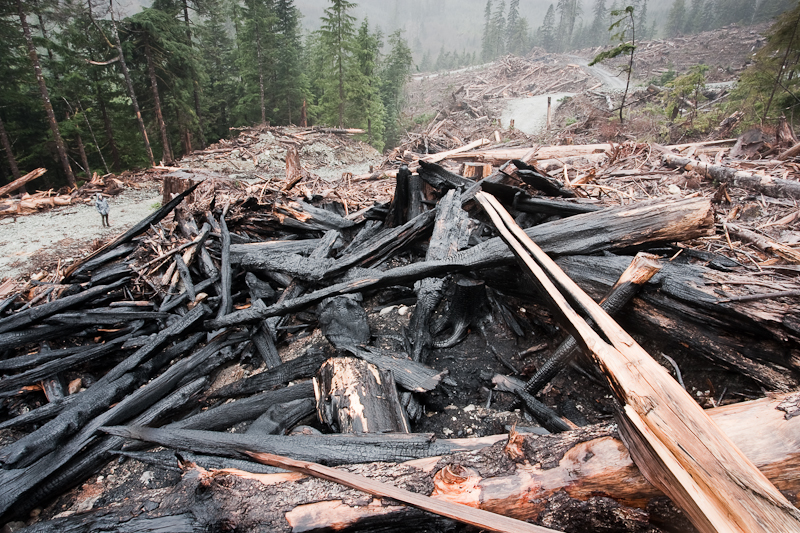
Expected layoffs in B.C. government’s Ministry of Forests bad timing says NDP
On the heels of issuing layoff notices to 294 public service workers Monday, the B.C. government is planning for another round of cuts in the Ministry of Forests by early summer.
At a time when lumber prices are booming but the industry is far from recovering, it's either the worst time to slash jobs -- according to the leader of the Opposition -- or an opportune time to cut, according to an industry leader.
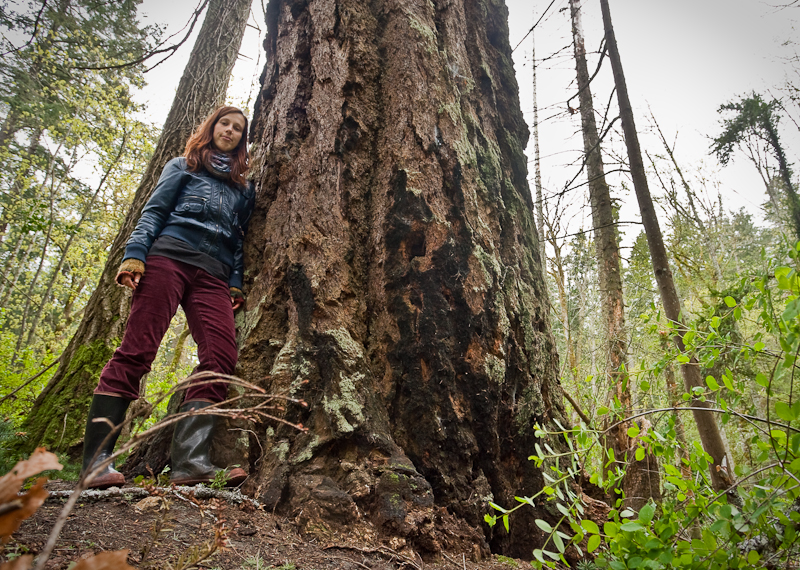
Environmental activist targets Oak Bay-Gordon Head riding to launch tree campaign
You don't have to drive hours out of Victoria to find old-growth trees or, for that matter, politicians who are hanging onto their seats by a thread.
Avatar worth exploring
I had the pleasure March 28 of joining 80 other members of the Ancient Forest Alliance to experience the small grove of old growth trees near Port Renfrew known (informally) as Avatar Grove.
Avatar worth saving
As one of the 80 hikers who visited Avatar Grove on March 28 with the Ancient Forest Alliance, I find it somewhat ironic that the Vancouver Olympics showcased the natural beauty of B.C.'s old-growth forests.
